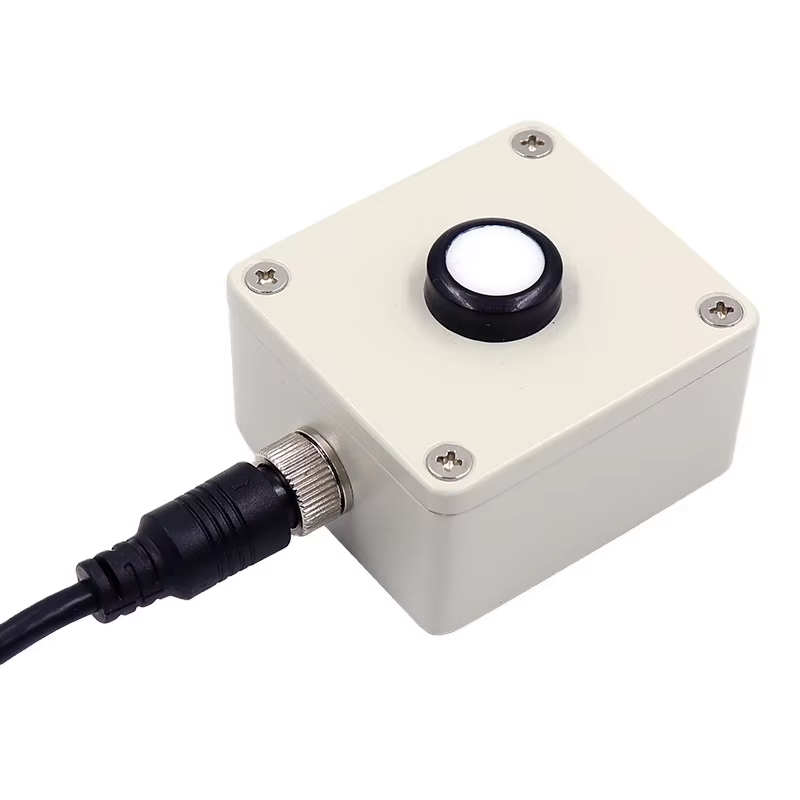Ihe mmetụta radieshon anyanwụ bụ ngwa eji atụ ike radieshon anyanwụ. A na-eji ya eme ihe na nlele meteorological, nlekota gburugburu ebe obibi, ọrụ ugbo, ike anyanwụ na mpaghara ndị ọzọ. N'ime afọ ndị na-adịbeghị anya, na mmepe ngwa ngwa nke ume ọhụrụ na nlebara anya na-aga n'ihu nke mgbanwe ihu igwe, ọganihu nkà na ụzụ na ngwa ngwa nke ihe mmetụta radieshon anyanwụ adọtawokwa nlebara anya karị. Nke a bụ ụfọdụ mgbanwe akụkọ na usoro metụtara ihe mmetụta radieshon anyanwụ.
1. Nkà na ụzụ ọhụrụ na mmepe
Ihe ọhụrụ na teknụzụ nghọta: Ndị ọkà mmụta sayensị na-emepụta ihe mmetụta ọhụrụ. Ihe mmetụta ndị a na-eji teknụzụ nanmal na ihe fotoelectric ọhụrụ, nke nwere ike ịrụ nha nha nha nke anyanwụ dị elu n'ime oke nlegharị anya. Dịka ọmụmaatụ, ụfọdụ ihe mmetụta ọhụrụ na-ejikọta njirimara anya na eletrọnịkị, nke na-eme ka mmetụta uche dị na ọkwa radieshon dị ala.
Teknụzụ mgbasa ozi ikuku: A na-ejikọta sensọ radieshon anwụ nke oge a na ọrụ nnyefe ikuku, nke nwere ike ibunye data nha na igwe ojii ozugbo. Ọganihu teknụzụ a na-eme ka nchịkọta data dịkwuo mfe ma na-eme ka nlekota na nyocha dịpụrụ adịpụ.
2. Mmebawanye ọnọdụ ngwa ngwa
Ọrụ ugbo nwere ọgụgụ isi: Site na mmepe nke ọrụ ugbo nke ọma, a na-eji sensọ radieshon anyanwụ eme ihe n'ugbo iji nyochaa gburugburu ebe ihe ọkụkụ na-eto. Site n'inweta data ụzarị anyanwụ n'oge, ndị ọrụ ugbo nwere ike ijikwa ogbugba mmiri n'ubi na fatịlaịza nke ọma, kwalite ọnọdụ uto ihe ọkụkụ, ma kwalite mkpụrụ.
Nleba anya gburugburu ebe obibi obodo: N'ime obodo mepere emepe, a na-eji ihe mmetụta anwụ anwụ na-enyocha ma nyochaa mmetụta agwaetiti ahụ na-ekpo ọkụ iji nyere ndị na-eme atụmatụ obodo aka imepụta oghere obodo na-adigide. Ụfọdụ obodo na-aga n'ihu na netwọk nlekota radieshon anyanwụ iji melite ogo ikuku na gburugburu ebe obibi nke ndị bi.
3. Amụma na ahịa-chụpụrụ
Amụma ume ọhụrụ: Gburugburu ụwa, amụma nkwado gọọmentị maka ume ọhụrụ enyela ikike na-anya ike maka mmepe nke ụlọ ọrụ ike anyanwụ. N'otu aka ahụ, ọchịchọ maka ihe mmetụta radieshon anyanwụ na-abawanyekwa iji nye nkwado data radieshon dị mkpa.
Amụma uto ahịa: Dị ka amụma nke ụlọ ọrụ nyocha ahịa si kwuo, ahịa ihe mmetụta radieshon anyanwụ ga-eto n'ọ̀tụ̀tụ̀ dị ukwuu n'ime afọ ole na ole sochirinụ. Ka mmetụta nke mgbanwe ihu igwe na-akawanye njọ, mkpa nlekota na mpaghara ndị metụtara ya ga-anọgide na-ebili.
4. Ọganihu nyocha sayensị na imekọ ihe ọnụ
Ọrụ imekọ ihe ọnụ nke sayensị: Ọtụtụ mahadum na ụlọ ọrụ nyocha na-arụ ọrụ nyocha sayensị na radieshon anyanwụ, na-achọ nyocha miri emi nke mgbanwe na radieshon anyanwụ site na teknụzụ nghọta dị elu na mmetụta ya na ihu igwe. Site na nkesa data na imekọ ihe ọnụ mba ụwa, ọrụ ndị a akwalitela ọganihu nkà na ụzụ na mpaghara ndị metụtara ya.
Ọgbakọ Ọmụmụ na Nzukọ: Nnyocha na teknụzụ ọhụrụ nke ihe mmetụta radieshon anwụ na-ekwukarị na ọgbakọ agụmakwụkwọ mba ụwa. Site na nlebara anya zuru ụwa ọnụ maka mgbanwe ihu igwe na ume ọhụrụ, nzukọ ndị a na-enye ndị na-eme nchọpụta ohere dị mkpa maka ịkekọrịta nsonaazụ na ahụmahụ kachasị ọhụrụ.
Dị ka ngwá ọrụ dị mkpa maka nyochaa akụrụngwa nke anyanwụ, ihe mmetụta ọkụ na-egbuke egbuke na-agbanwe mgbe niile na nkà na ụzụ, ngwa na ahịa. N'ihe gbasara ịzaghachi mgbanwe ihu igwe na ịkwalite mmepe mmepe, anya nke ubi a ga-anọgide na-abawanye n'ọdịnihu. N'ihe gbasara ọrụ ugbo nwere ọgụgụ isi, nleba anya n'obodo ukwu ma ọ bụ iji ume ọhụrụ eme ihe, ihe mmetụta radieshon anyanwụ ga-arụ ọrụ dị mkpa na-arịwanye elu.
Oge nzipu: Dec-25-2024


